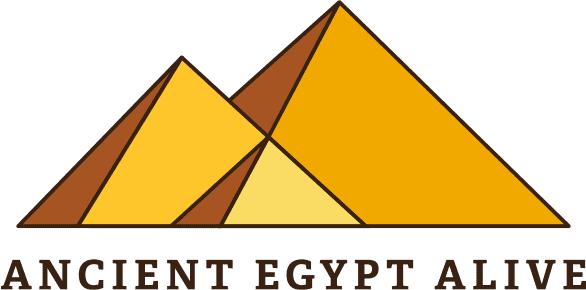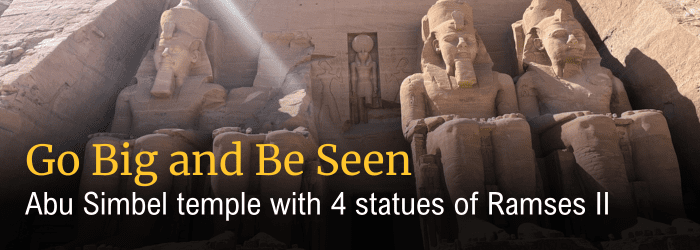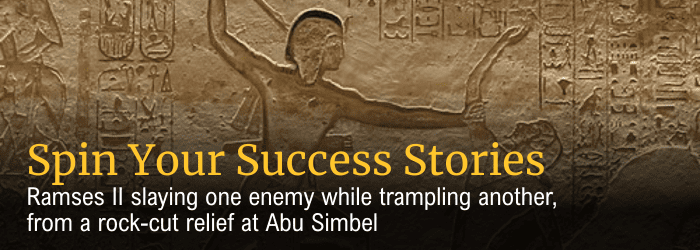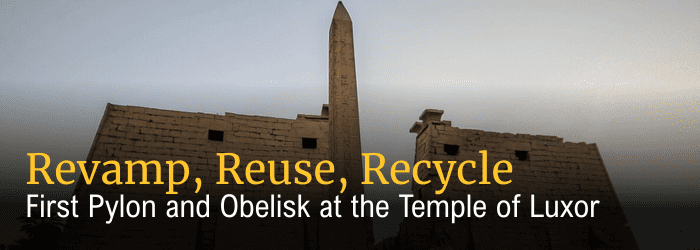Part 1 in the new series: Business Lessons from Egypt’s Pharaohs.
In a world obsessed with branding, few did it better—3,000 years ago—than Ramses the Great. Just ask Jean-Guillaume Olette-Pelletier, a modern-day codebreaker of ancient messages. This Egyptologist and expert in hieroglyphic cryptology recently uncovered a hidden inscription atop the Luxor Obelisk in Paris. (He was able to climb up on renovation scaffolding to examine it over COVID.)
The 3D message was intended to dazzle Nile travelers – specifically targeting the nobility class – who were approaching the Luxor Temple by boat during the Opet Festival. The message: glorifying the pharaoh’s divine right to rule and asking for donations to the temple to appease the wrath of the gods. In short: it was strategic, exclusive, and utterly on-brand – with a strong compelling call to action. If Ramses were alive today, he could be running a global PR firm—or at least at the helm of a winning political campaign.
But here’s the twist: Ramses wasn’t just a PR genius on the Nile. His approach to image-building, narrative control, and strategic visibility offers surprisingly modern lessons for today’s entrepreneurs and marketers. Whether you’re running a growing business or looking to make your brand unforgettable, there’s a lot you can learn from Egypt’s most self-assured king.
As a busy entrepreneur, you may not think you have time for ancient history. But you likely know the name Ramses. You’ve seen his towering colossi at Abu Simbel. You may have glimpsed his massive statue—70 feet tall—welcoming guests at the Grand Egyptian Museum in Cairo. Ramses wasn’t just a ruler. He was a builder, a warrior, a negotiator, and an unstoppable force of nature who fathered nearly 100 children and ruled Egypt for 66 years.
But perhaps most impressive of all: Ramses was a master of perception. A spin doctor before the term existed. Here’s what he can teach us.
Go Big and Be Seen
Ramses never let humility get in the way of ambition. If you compared him to a modern figure, think someone bold, brash, and media-savvy—like Trump without the Twitter storms and controversy. Ramses made sure his image was everywhere. North, south, east, and west. Statues, temples, inscriptions—his likeness rose great and mighty across Egypt and the lands he conquered.
Nowhere was this more evident than at Abu Simbel, his two grand temples in the south near the Nubian border. Four colossal statues of the king—each nearly 70 feet tall—flank its facade. This wasn’t just an architectural feat; it was a power move. A billboard in stone, proclaiming: “This is who rules here.” Even inside the temple, Ramses placed himself in the “holy of holies” alongside the gods Amun, Ptah, Ra-Harakhty—and himself, deified. Ever the showman – he even went a step farther. On October 22 and February 22 each year, he positioned his temple so that the rays of the rising sun illuminate his face and two of the gods beside him. Narcissist? Maybe. But dazzlingly brilliant for sure!
Business takeaway: Don’t be afraid to make a bold impression. Canadian entrepreneurs in particular often struggle with modesty. But when it comes to marketing, visibility matters. Be strategic, be proud, and go big in your branding. Sometimes, audacity is the most effective advertising and the way you can stand out in a crowded market
Spin Your Success Stories
One of Ramses’ most famous exploits was the Battle of Kadesh, fought against the Hittites. Historically, it ended in a draw. But not according to Ramses. He had massive reliefs carved into at least five temples across Egypt showing himself as the lone, heroic victor, charging the enemy while his troops cowered.
Was it all true? Not exactly. But it wasn’t false either. Ramses spun the story in his favour, crafting a narrative of bravery, dominance, and divine favor. With himself as the hero of course.
Business takeaway: Tell your story—and tell it well. If you’ve had a client success, showcase it in the best light. Publish that case study. Post the testimonial. Don’t let perfect be the enemy of progress. Even if there were bumps in the road, if the result was a win, own the narrative. Frame your victories. Shape perception. As Ramses showed, history remembers the story that gets told most often—and most powerfully.
Revamp, Reuse, Recycle
Massive temples and statues cost resources. A lot of them. Ramses, ever the strategist, didn’t always build from scratch. Instead, he often took over monuments from previous kings—chiseling off their names and replacing them with his own.
Obelisks, statues, even entire temples were repurposed in his image. The result? Faster, cheaper domination of the visual landscape. And a perception that Ramses was responsible for even more than he actually built.
Business takeaway: Don’t reinvent the wheel. If you’re launching a new service or entering a new market, see what’s already out there. Can you repurpose content, adapt a former product, or even revive a dormant brand? Smart resource management is timeless—and sometimes, strategic borrowing can give you the edge.
Final thought on Ramses and his PR
Ramses the Great didn’t rely on word of mouth. He created the narrative. He built with purpose, shaped perception, and branded his way into immortality. For modern entrepreneurs, marketers, and leaders, there’s a simple but powerful lesson here: control your story—or someone else will.
Ramses ruled the 13th century BCE. But his tactics?
Pure 21st-century genius.
_________________________________________________________________________________
Learn more about Ramses II and other Pharaohs at our upcoming learning events:
GEM: Egypt’s Greatest Museum – The Stories, Treasures & Experience
Everything you need to know about the world’s largest archaeological museum—opening this year at Giza!
Join us for a fascinating three-part course that unveils the epic journey of this breathtaking museum: from its conception and architectural marvels to its world-class exhibitions and much-anticipated opening.
Week 1: Vision & Architecture – Uncover the groundbreaking design, decades-long construction, and challenges behind this monumental project.
Week 2: Soft Opening Collections – Step inside newly opened galleries, from the Grand Staircase to breathtaking exhibits.
Week 3: Tutankhamun Reimagined – Experience the boy king’s treasures like never before in a stunning new display.
Tuesdays, May 6, 13 & 20 | 4:00–5:30 PM
WILL BE RECORDED
SIGN UP TODAY!



